Just this year Vortex has been quite popular especially with their 1-10×24 Razor LPVO which Matt E reviewed. I was more interested in their new Strike Eagle 5-25×56 as an upgrade from my Diamondback Tactical 6-24x50mm. How does the Strike Eagle 5-25×56 hold up to long range shooting? Let’s take a closer look.
Step Aside, Here Comes The Strike Eagle

Diamondback Tactical on my RPR Rimfire.
For the past year, I have been dabbling in shooting further and further. I still remember when I started out back in 2011 when shooting 400 yards seem long range for me. Mostly because at the time I did not have access to a range past 200 yards. So I did not understand hold over for the round I was shooting. As I started to finally push out to further I started out with a Vortex Viper PST Gen 1 6-24x50mm EBR-1 Reticle on my 6.5 Creedmoor Ruger American Predator. That gun didn’t quite cut it. I then acquired a Loaded M1A in 6.5 Creedmoor and put that scope on it. I found shooting out to 1,000 yards a bit challenging and I had more misses than hits. Also, the reticle was not great and I rapidly ran out of elevation. So I scaled back and tried the Vortex Diamondback Tactical 6-24x50mm FFP. It cost less than half the price of the Viper and has a phenomenal reticle for such a low cost scope.

I love this scope so much that I own three of them. I got one for my Ruger Precision in 6.5 Creedmoor as well as one for the Ruger Precision Rimfire in .22LR. The third one is my all-purpose scope for various firearm testing. I used it on the Pork Sword and the SCAR17S when I was testing the long range 7.62×51 ammo.
However, there are some drawbacks to the Diamondback Tactical. The biggest issue I had with it is the lack of a zero stop. I would have to keep track of my zero based on how many MILs from the bottom of the turret it is. So I would lower elevation all the way to the bottom and dial back up to what my 100 yard zero was. When I use the Strelok Pro ballistic calculator to get my holds at further distances I would have to add that many MILs to what my turret was set at. It’s not difficult math but it is a bit annoying doing that all the time. Another issue is part of the reticle itself. While it does everything I could ask for, I do not understand why the MILs numbers on the Christmas tree reticle are next to the vertical line. Those numbers clutter up the sight picture and sometimes obscure my misses so I can’t make corrections as easily. That is not the case with the Strike Eagle 5-25×56. Another problem I experienced is the lack of elevation adjustment for shooting past 1,000 yards. It only has 19 MRAD of elevation. When I tried to shoot out to a mile I had to hold at the bottom of my reticle and it was not great. I could not see my misses.
The Strike Eagle 5-25×56 is beefy. It is a 34mm tube versus the 30mm tube of the Diamondback Tactical.

Strike Eagle on top, Diamondback Tactical just below it.
The turrets are huge.
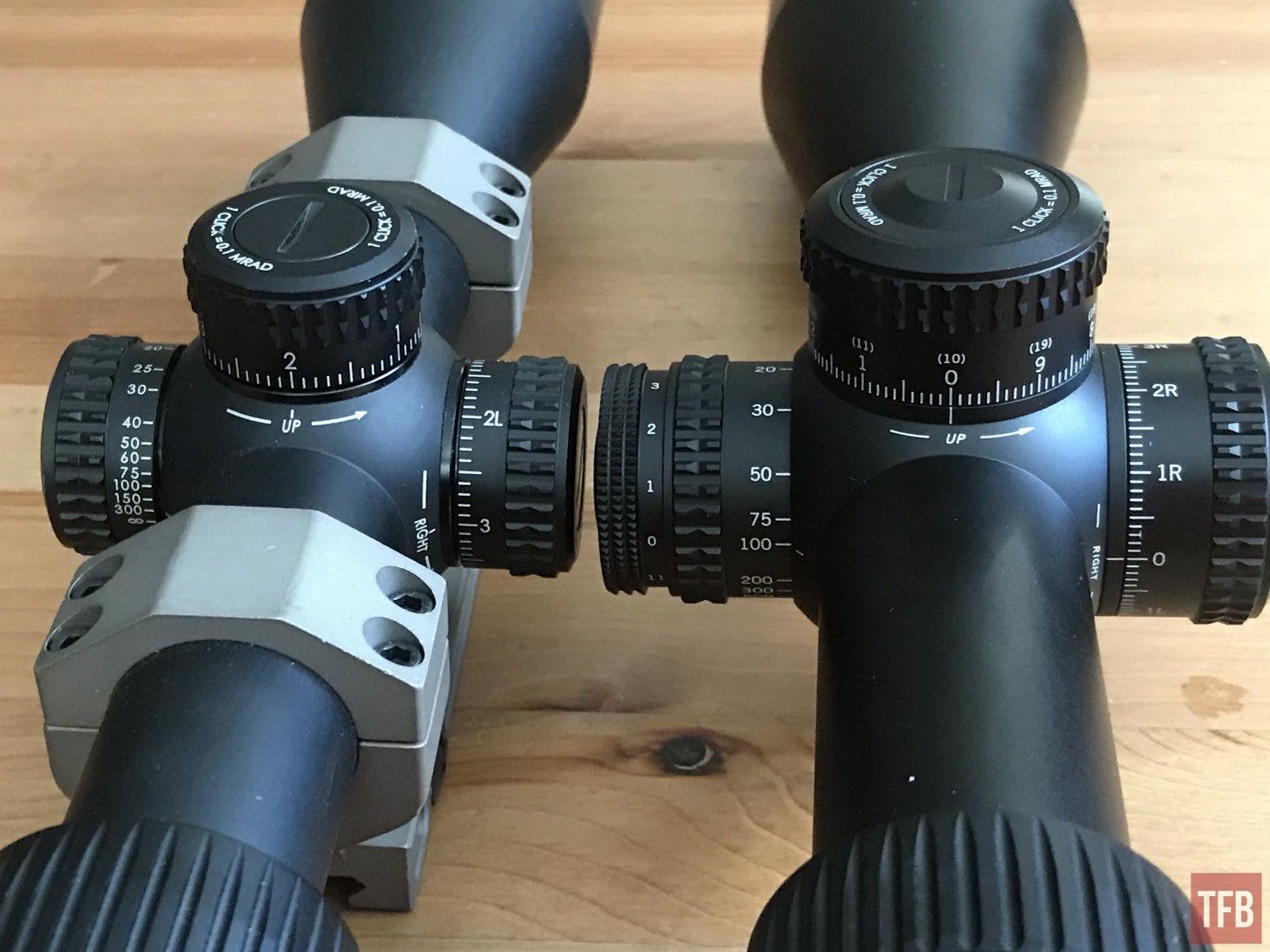
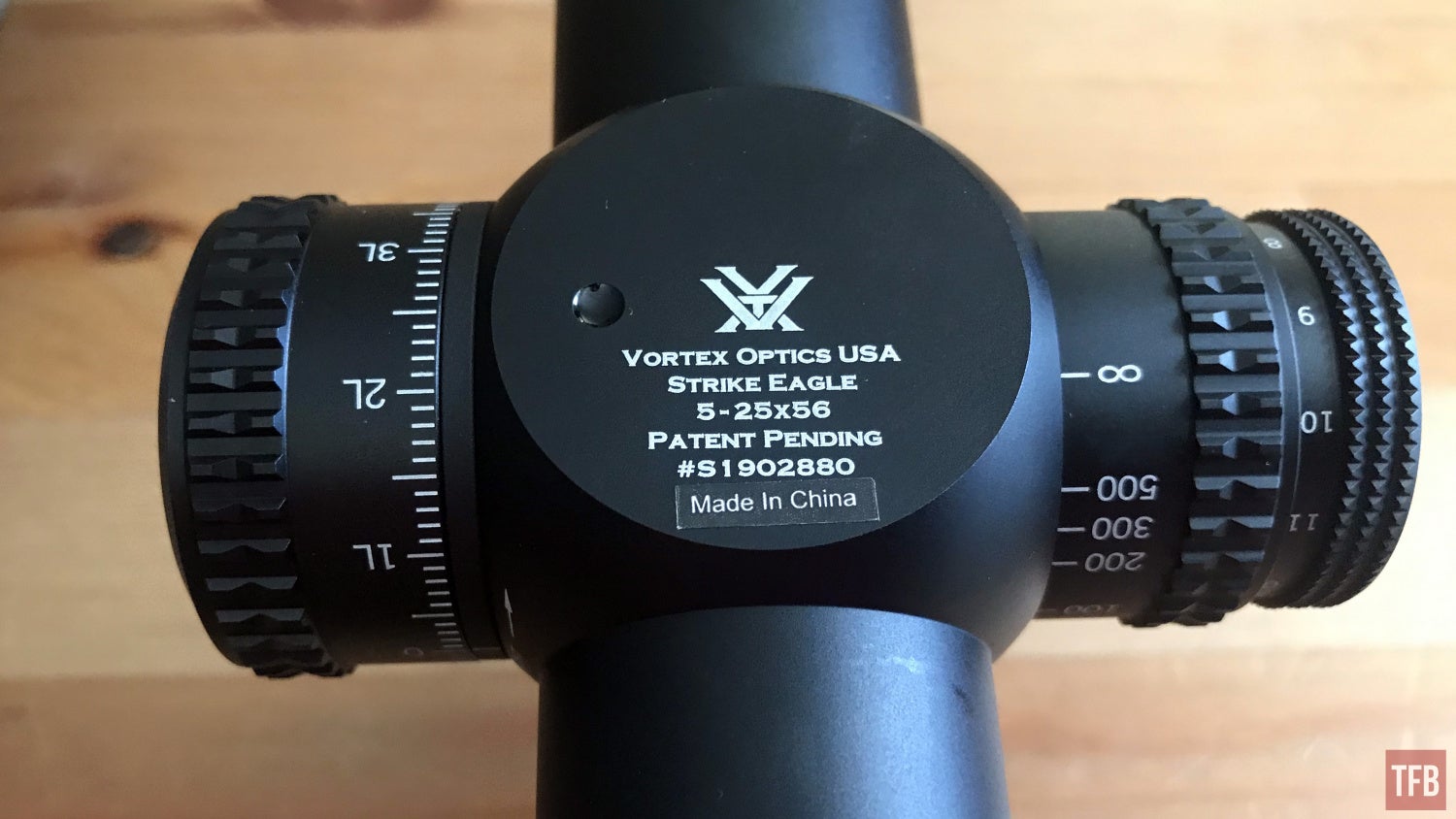
One immediate problem I had was that I did not have any 34mm rings for this scope. And the ones that Vortex sent were too low even for my Ruger Precision.


The 56mm objective lens is so wide that it hits the top of the Ruger Precision handguard.
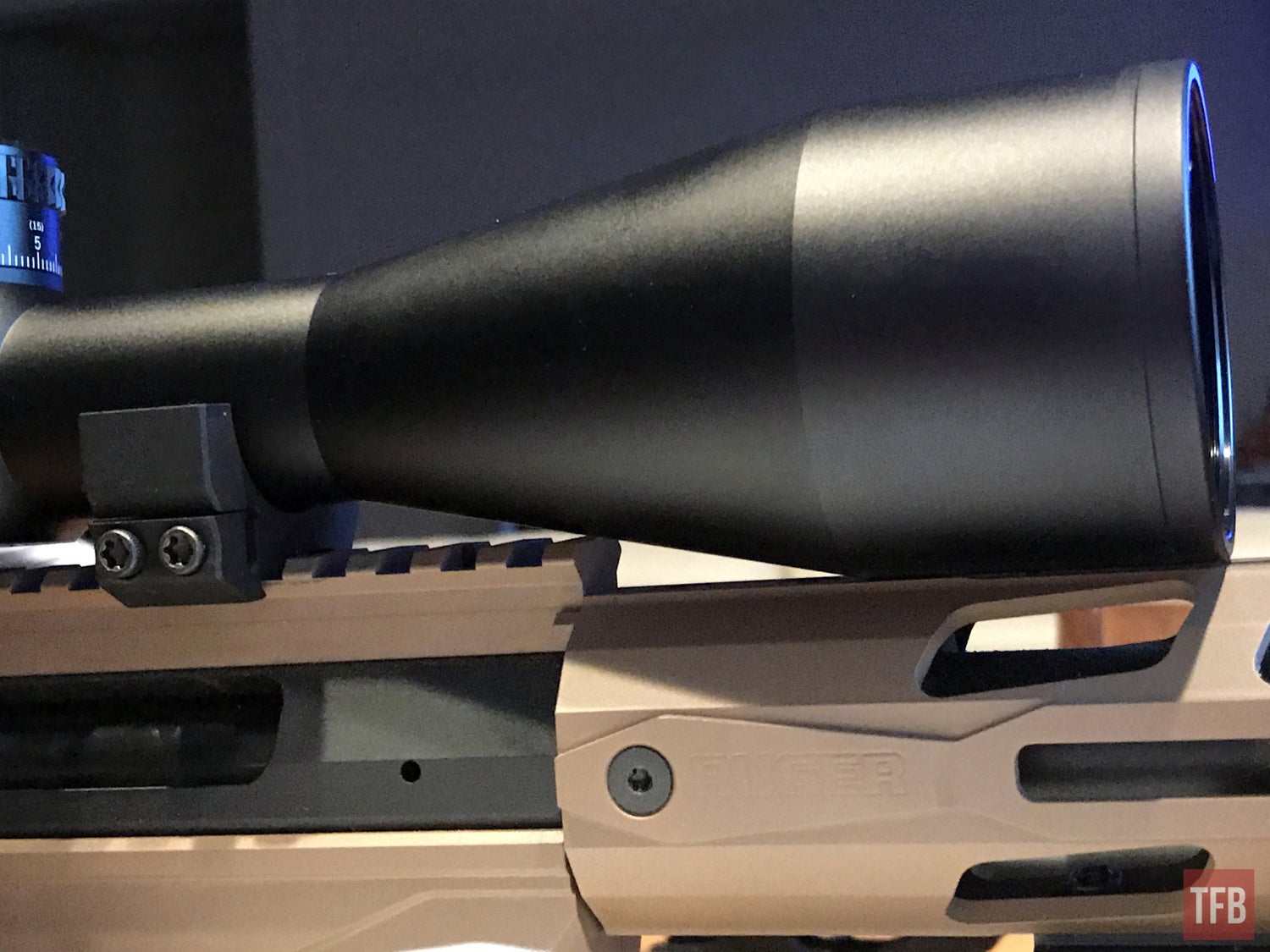
So my friend Kythe lent me his Vortex single-piece cantilever mount.


It lines up perfectly with my PVS-27
The elevation and windage knobs have a locking cap. Just pull up and start twisting. Then push back down to lock them out. The clicks are positive and with the zero stop, it is easy to dial up for elevation.
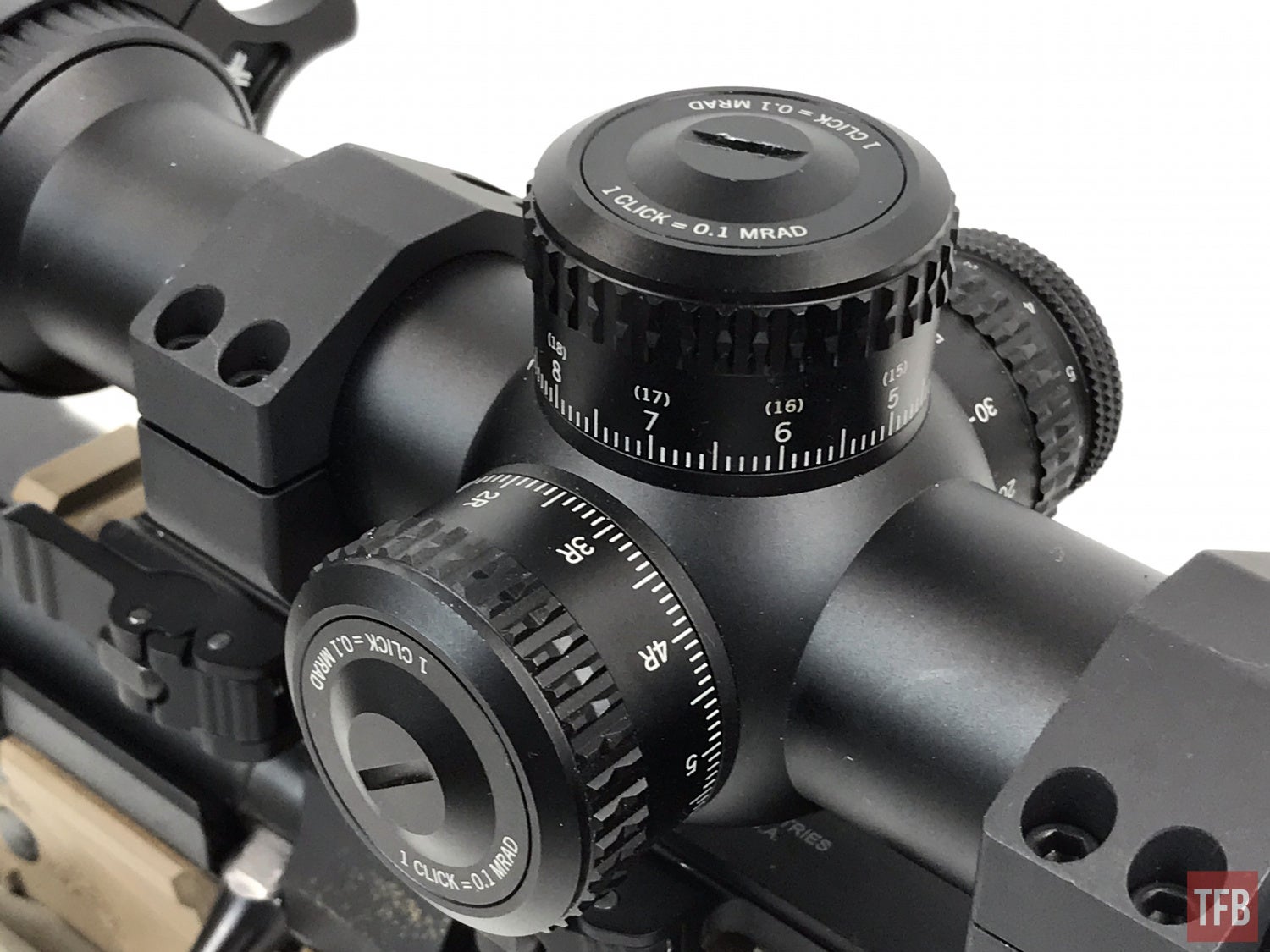
You can see on the elevation turret there are numbers in parenthesis just above the larger numbers. This is so when you go past 10 MILs you do not need to remember you are at 11 instead of 1. It just tells you on the turret.

On the left side of the Strike Eagle 5-25×56 is the parallax adjustment knob and the power for the illuminated reticle. The Diamondback Tactical 6-24×50 just ever so slightly beats the Strike Eagle as it can adjust down to 10 yards whereas the Strike Eagle can only focus down to 15 yards. Deal breaker right? LOL. You can do a lot at 15 yards if you are shooting an NRL22 match with one of these scopes.

Another added feature that the Diamondback Tactical lacks is the throw lever for the magnification ring. The Strike Eagle ring is super smooth and easy to turn with the throw lever. It is almost effortless.

How Does The Strike Eagle 5-25×56 Look?
Ahh the meat of the issue, “How does it look?“. It looks good. Although maybe I am biased since I have been looking through budget level scopes. For a comparison, I looked at the same object with the Diamondback Tactical 6-24×50 and the Strike Eagle 5-25×56.
Diamondback Tactical 6-24×50: 530 yards

6x magnification


The Diamondback Tactical suffers when you are at full 24x magnification. The image falls apart and you get a very small eyebox. I usually have to back off to around 20x for the image to be decent.
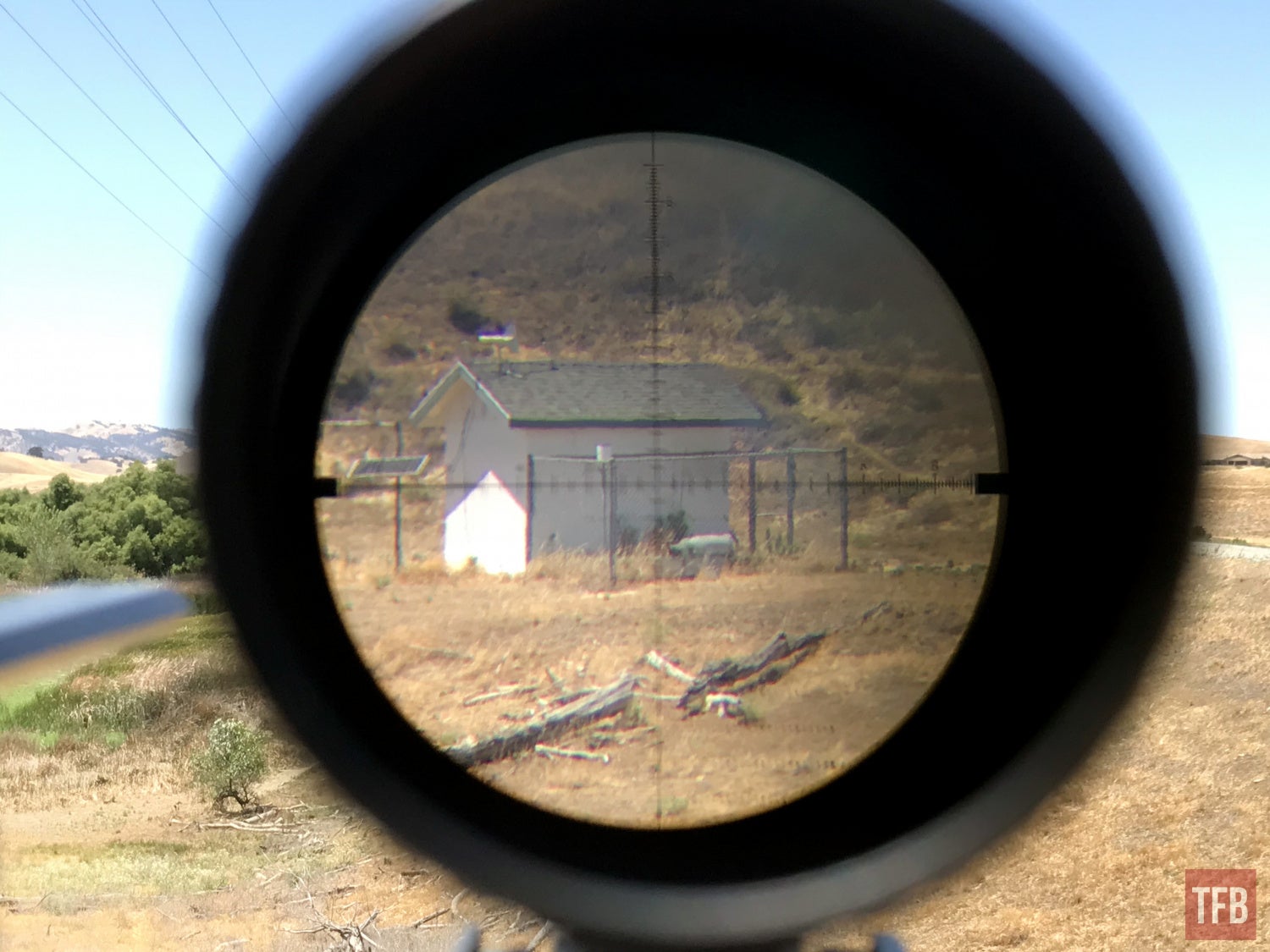
About 20x magnification
Strike Eagle 5-25×56: 530 yards
Now let’s take a look at the same building through the Strike Eagle.
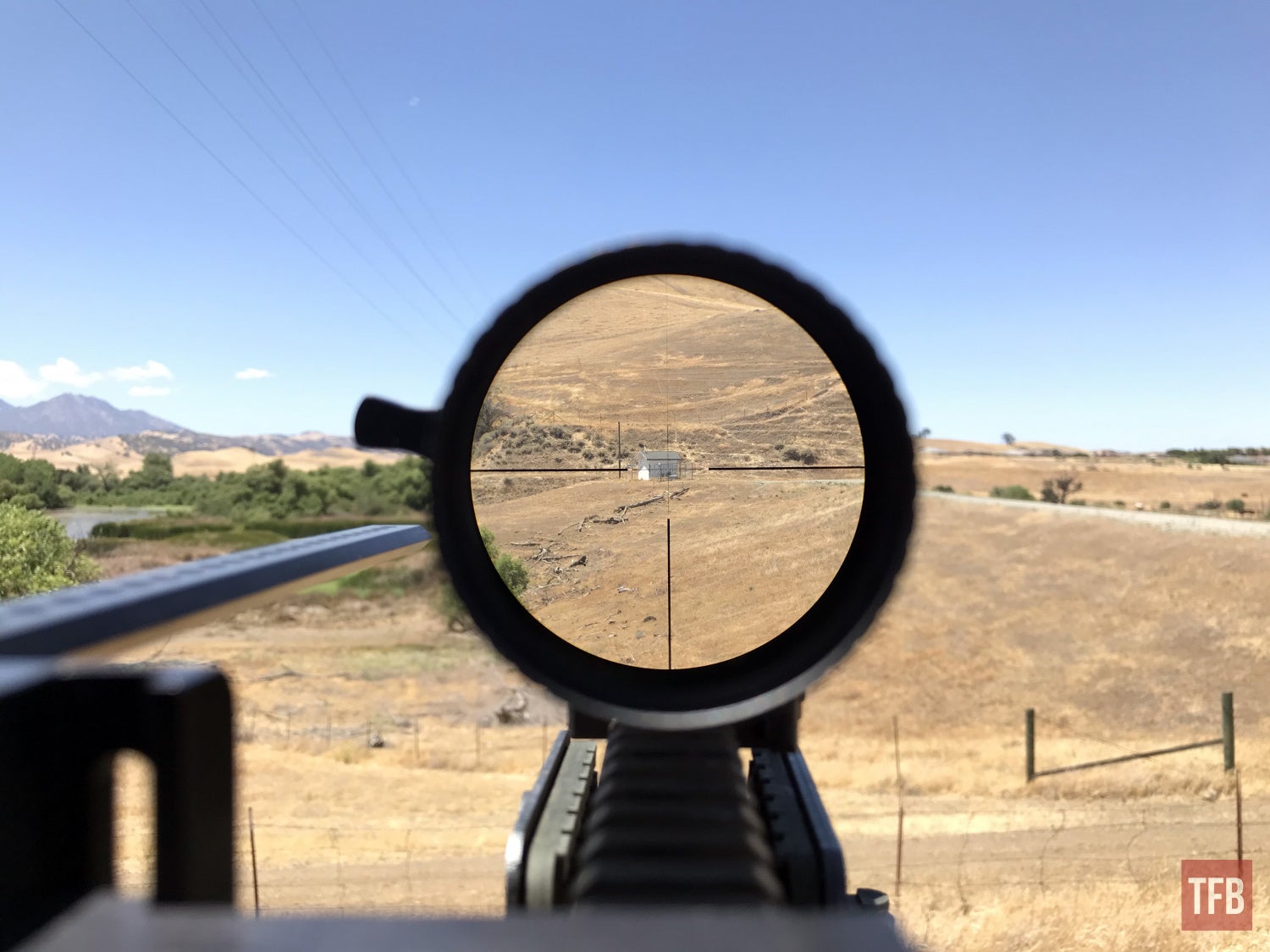
5x magnification
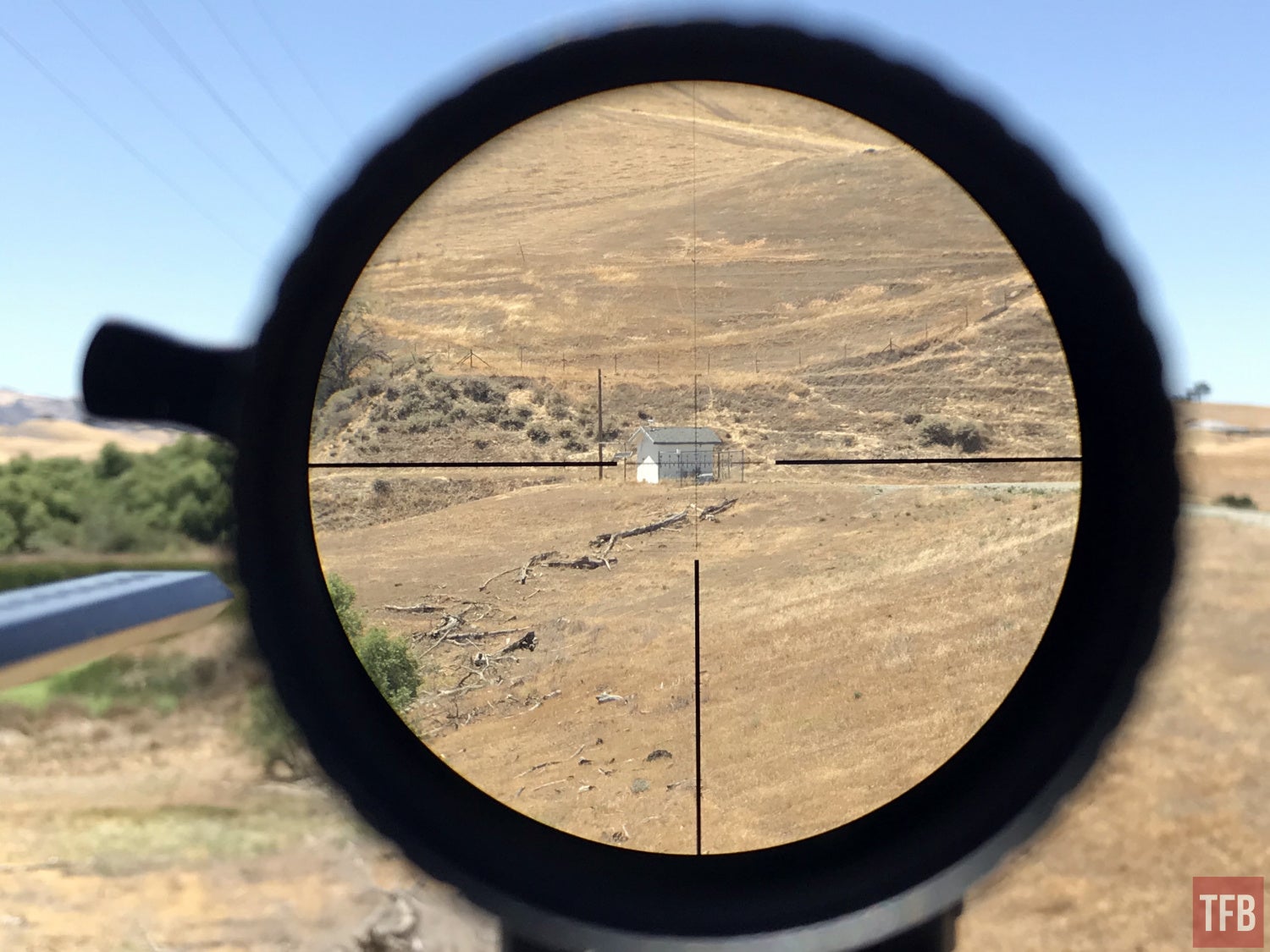

25x magnification

Pretty amazing right? Let’s go farther.
Diamondback Tactical 6-24×5: 2000 yards
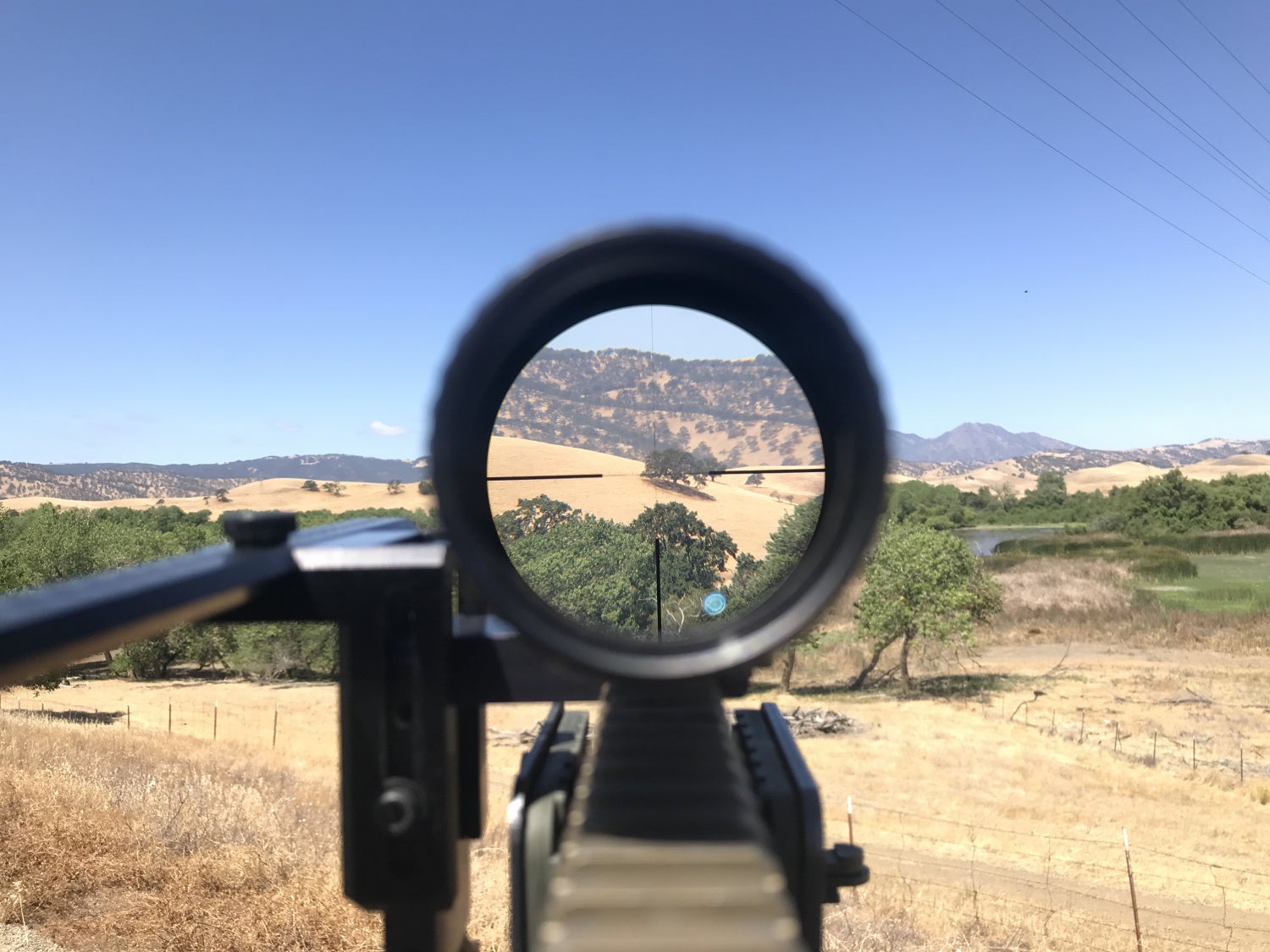

Strike Eagle 5-25×56: 2000 yards

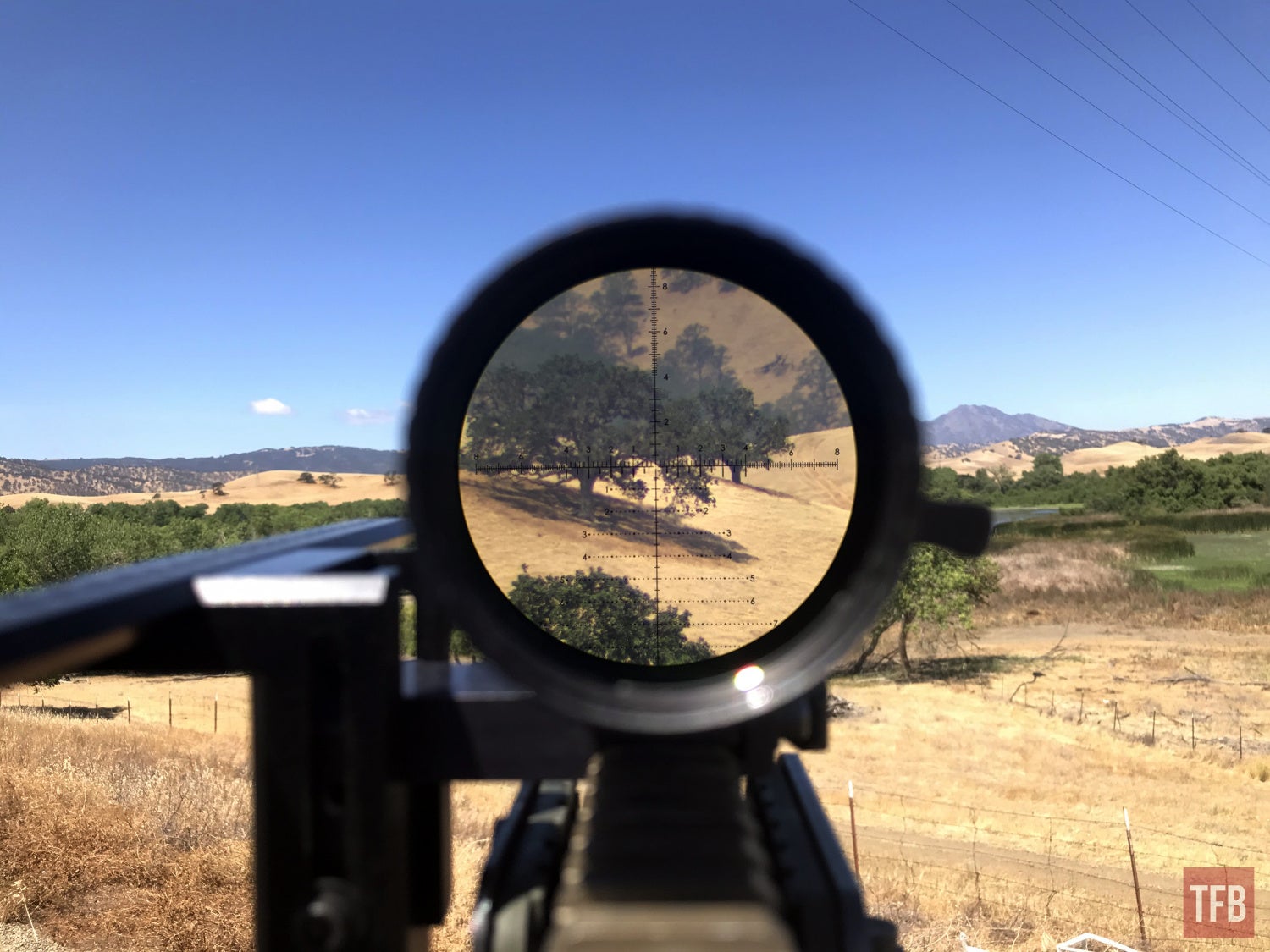

As I mentioned earlier, the Strike Eagle 5-25×56 has an illuminated reticle.


This helps in lower light and in some cases when paired with a CNVD (clip-on night vision device)

The reticle can be a bit tricky to pick up without illumination however lighting makes all the difference. The two images below and the one above were shot on a moonless night.


The following images were taken during a full moon. There is more light and a bit more contrast thus making it easier to see the reticle against the bright green phosphor of the PVS-27.

2000 yards at night on a full moon.
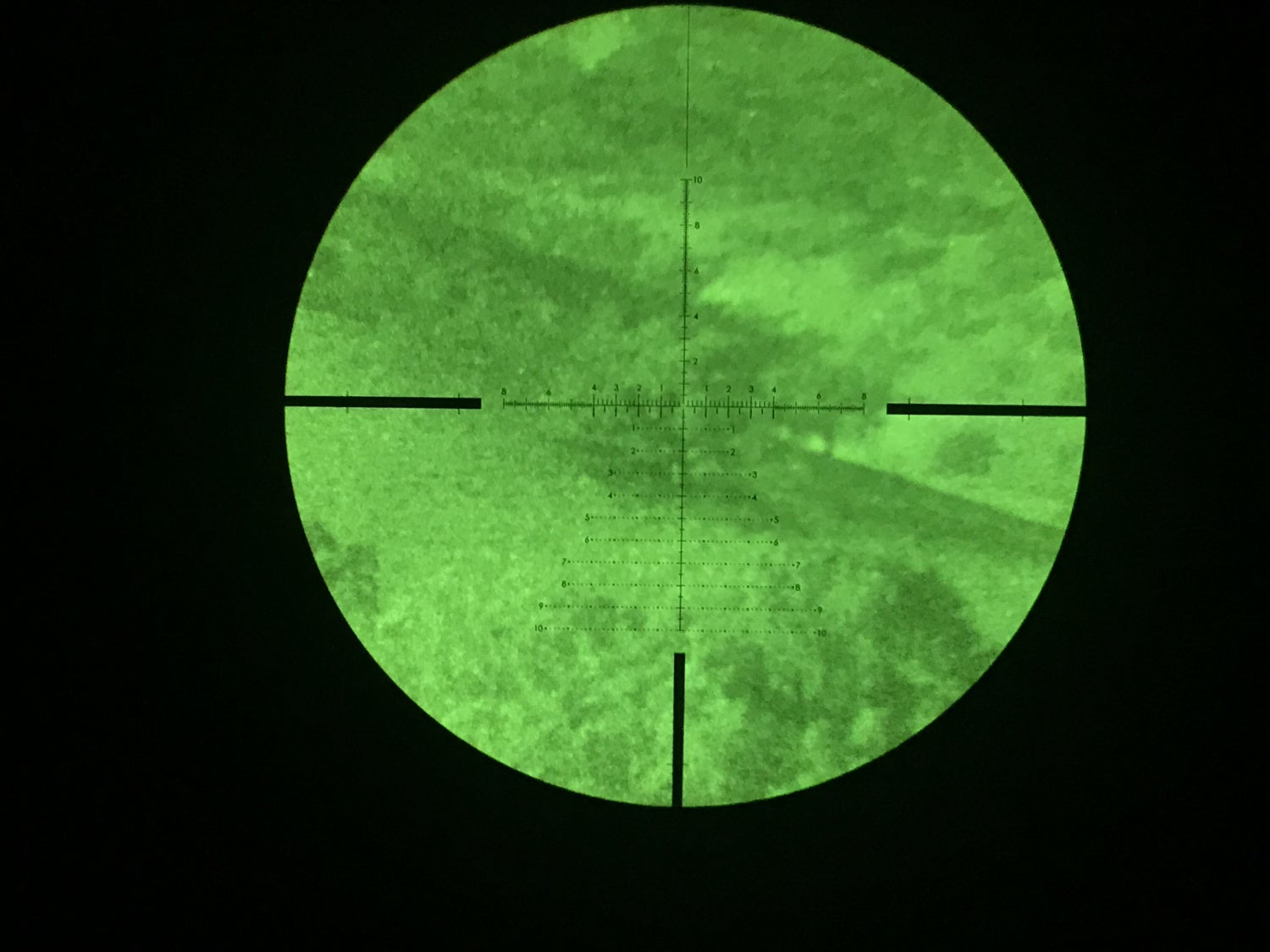
Close up of the tree out at 2000 yards
It’s A Keeper: Strike Eagle 5-25×56

I have found my new favorite scope for my 6.5 Creedmoor Ruger Precision Rifle. I switched to a Midwest Industries extreme duty scope mount for the quick detach feature. The quality of the image in the scope is very good and better than the Diamondback Tactical.
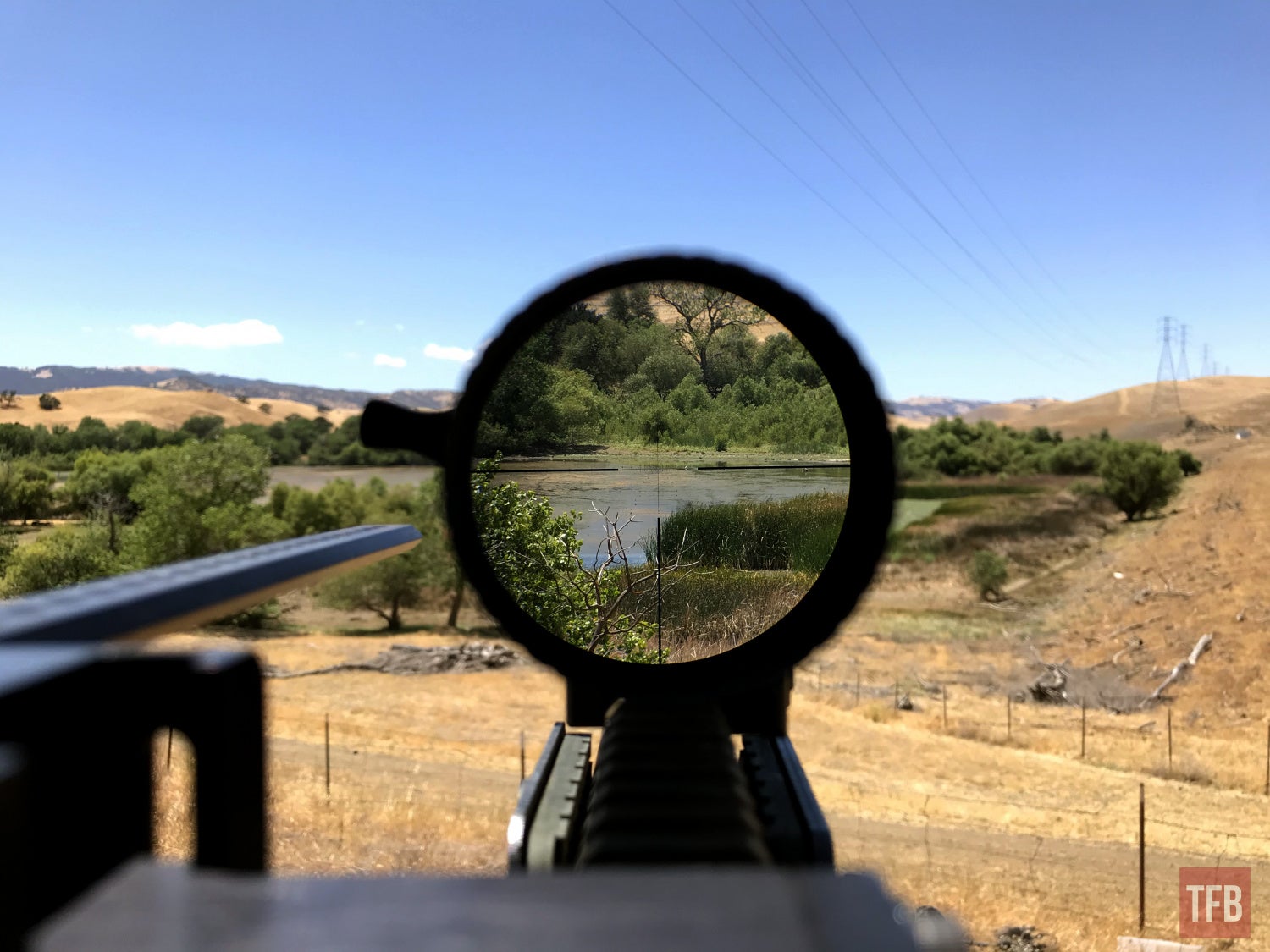
Just under 500 yards to the bird.

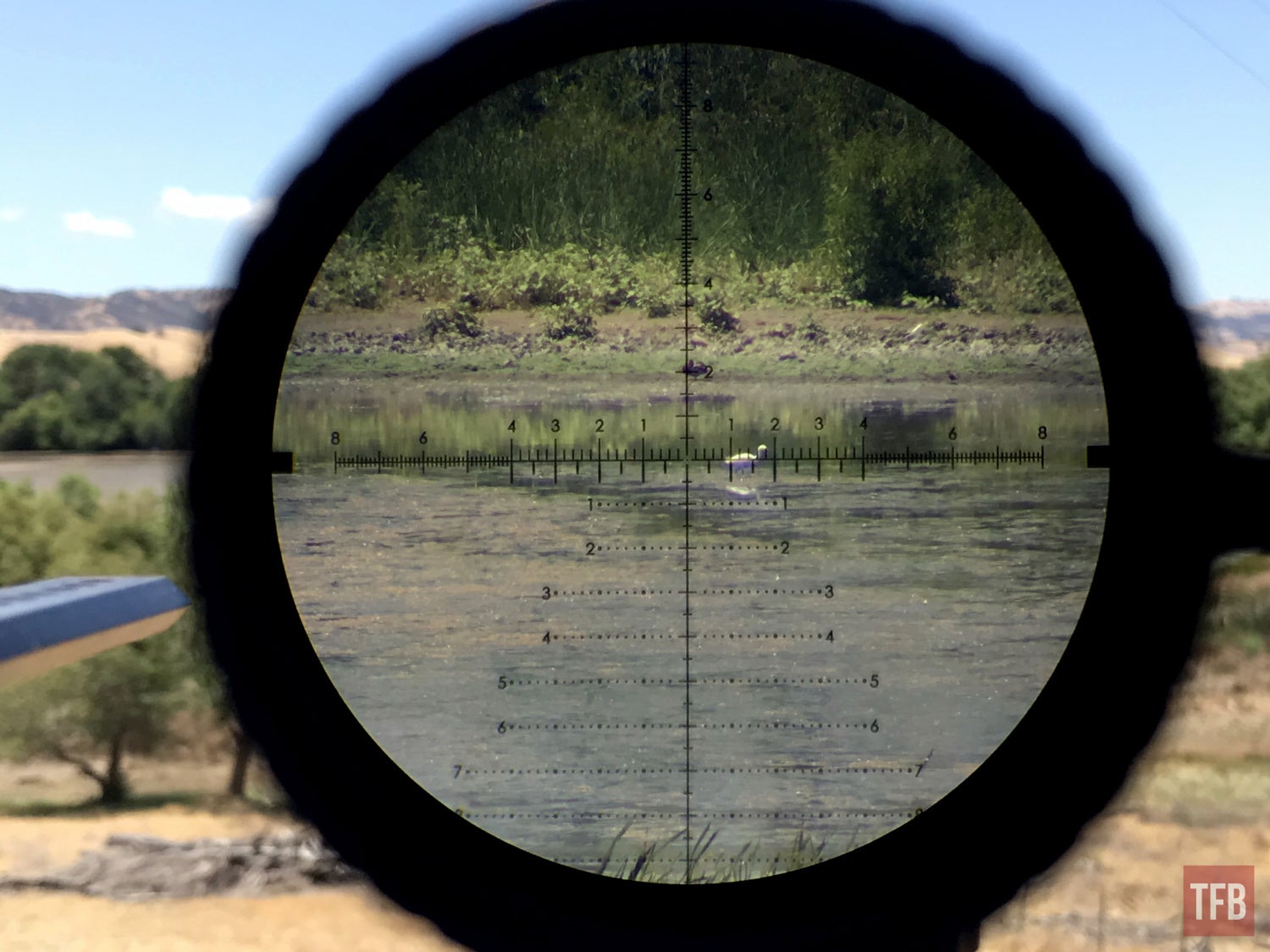
When I was testing the Strike Eagle I got a few people ask me how it compares to the Vortex Viper PST GenII and I could not answer them because I do not have time behind that scope. The only difference I can tell is that the Viper is $1299 and it is only a 50mm objective and a 30mm tube rather than a 34mm tube like the Strike Eagle which comes in at just $799 MSRP. Because of the larger diameter tube, you have more elevation adjustments. 31 MRAD for the Strike Eagle versus just 20 MRAD on the Viper PST GenII. For windage, you get more than double the range. 23 MRAD for the Strike Eagle and only 10 MRAD for the Viper PST GenII. Just the elevation increase should help a lot when I try shooting out to a mile again.
If you are looking for a decent scope that can see far and allow you to make hits that is sub $1,000 then the Strike Eagle 5-25×56 FFP is the scope for you. Go to their website for more information.
We are committed to finding, researching, and recommending the best products. We earn commissions from purchases you make using the retail links in our product reviews. Learn more about how this works.
 Your Privacy Choices
Your Privacy Choices
